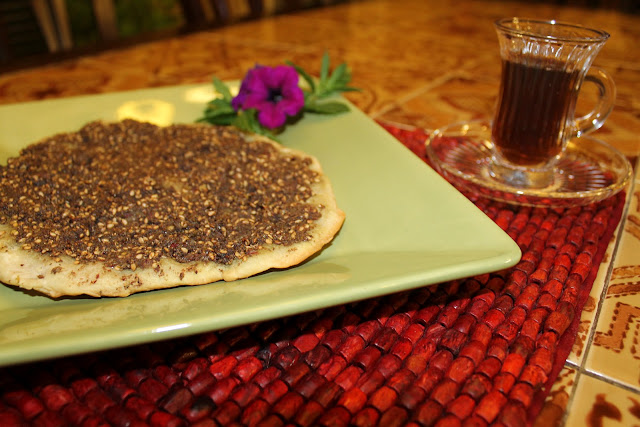Corchorus in a Tupperware
What is the first thing I do after getting back from weeks
of traveling for work…? I cook for my family of course! Last night I made all
the appetizers and my aunt Salwa made the main dishes. The highlight of the
night was the ‘Mloukhiyeh bi zait,’ which is translated into Corchorus in olive
oil, which also happens to be one of my favorite dishes.
The past couple of weeks have been quite intense. I moved out my house in Norman and it is up for sale
now. I’ve flown to several cities around the U.S for work, I’ve applied to a
position in Atlanta with my company, and Syria is on the brink of
collapse. I am worried about my mom,
Nana, Teta, everyone there! I also feel that I am in a transition period as my
furniture is sitting in my Dad’s garage as I get ready to move again, to
Atlanta I hope! So everything is uncertain at the moment. I’ve struggled with uncertainty in the past
but I’ve learned to embrace uncertainty over the years. “When you become
comfortable with uncertainty, infinite possibilities open up in your life.” I
try to follow Eckhart Tolle’s words as his teaching have had a great influence
on my life and continue to do so today.
In trying to overcome the fear and anxiety associated with uncertainty,
some comfort food goes a long way! The
dish I want to share with you today has Nana written all over it, hence I find
it the most comforting. She used to put
the ‘Mloukhiyeh bi zait’ in a Tupperware in her fridge and we would eat it for
days! It is served cold and is the most refreshing thing to eat! I don’t know anyone besides Nana
that makes it like that; without the rice, vegetarian and served cold. I am starting to believe that she invented
this dish, but when I asked her she said that all her sisters (my great aunts)
make it as well. Mloukhiyeh is a very
popular dish in the Southern and Eastern Mediterranean Basin where it is
usually served with rice on the side and cooked with lamb, chicken or rabbit meat. The leaves are also cooked in West Africa
and parts of East Asia with different spices and sauces. The health benefits of the leaves exceed
that of spinach, collards, arugula and most greens for that matter, not to mention that it is a natural aphrodisiac! Well anyway, I can’t wait to call Nana and
tell her about the Mloukhiyeh I made and how delicious it turned out! I just
wish she was here to try it for herself. I put the leftovers in a Tupperware as I will be nibbling on them for a few days just like Nana and I used to do!
Ingredients:
5 cups of corchorus leaves (If using dried leaves, soak
overnight)
1 small red bell pepper
1 small yellow bell pepper
1 large onion
6 cloves of garlic
1 bunch cilantro
1 cup of sundried tomatoes
2 tblsps olive oil
2 tblsps tomato past
1 tsp chili pepper paste
1 tsp black pepper
½ tsp salt
½ tsp cayenne pepper
Directions:
- Here I used dried leaves so I soaked them in water the night
before.
- Wash them the following day and squeeze all the water out with your hands then set aside on clean cloth to dry.
- Wash them the following day and squeeze all the water out with your hands then set aside on clean cloth to dry.
- Chop 3 cloves of garlic with a knife and mince another 3.
- Heat the oil and add the onions. Add the chopped garlic after 5 minutes with a
dash of salt.
- 3 minutes later you can add the bell peppers and half of the
chopped cilantro.
- 5 minutes later add the Mloukhiyeh leaves and add a little
more olive oil as needed.
- Stir fry with the olive oil and vegetables for 25 minutes
and continue to add olive oil as it dries.
- Now you can add the tomato paste and chili paste along with
the spices and a glass of water.
- Let it simmer for around 30 minutes. Keep adding a little water as it dries
quickly and continue to stir every few minuets.
- Add the rest of the cilantro and minced garlic, cook for
another few minutes and remove from heat.
- Let it cool off for a few hours and serve cold with pita
bread.


For ever unique course of, there's a machine particular machine used to carry out that Humidifiers course of. For instance, on any given job, a steel fabricator might be required to use a laser chopping, press brake, or roll forming equipment. Since each project is different, the equipment required for that project may even be different.
ReplyDelete